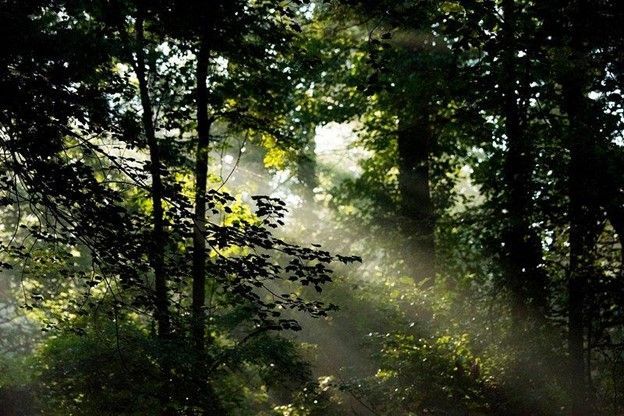Enjoying Outside - Forest Bathing

It’s not quite what it sounds like, there’s no tub with warm water or bubbles involved but it does definitely involve surrounding yourself with comfort and peace. Like a warm bath. Forest bathing, also called “forest therapy”, is rooted (no pun intended) in the Japanese process of shinrin-yoku. Frequently translated as “forest bathing” shinrin-yoku means to soak yourself in the atmosphere of the forest.
Shinrin-yoku was introduced by the Japanese ministry of Agriculture, Forestry and Fisheries in 1982. It uses three concepts: yūgen, komorebi and wabi sabi.
- Yūgen is difficult to translate but essentially means beauty so profound that it can not be said in words.
- Komorebi literally means “sunlight leaking through the trees”. It is the dance of tree canopy shadows on the forest floor; some say it’s not a word, it’s a feeling.
- Wabi sabi is to find the encompassing beauty in something, including its imperfections.
The purpose of forest bathing is to be existent in that moment, noticing the sights, smells and sounds of the forest; pushing out and replacing the “junk” that normally litters our thoughts and senses. Forest bathing replaces judgment and evaluation of things with the feeling of things. This is a sensory experience.
Researchers have been studying the physiological effects and benefits of forest bathing but because it has only been around for a few decades, there isn’t a lot of concrete evidence that show it can scientifically improve one’s physical health. However, the evidence that has been found is something that we already knew - that spending time outdoors is good for you. Time outdoors can reduce stress. Chronic stress can contribute to the advancement of insomnia, anxiety and a weakened immune system. Other studies have indicated that forest bathing may possibly help reduce blood pressure and aid in regulating blood sugar levels as well as significantly reducing depression, stress and anxiety. Focused forest bathing is experiencing the natural environment by engaging all of your senses drawing attention away from negative thoughts. Forests themselves also provide other elements such as antimicrobial compounds and pleasant aromas that may contribute to stress reduction, boost the immune system and contribute to emotional wellness.
National Geographic recommends places that include a passport but luckily most of us are close enough to a certain national monument (wink,wink) that provides something for everyone to disconnect from the hustle and bustle of our everyday digital life and reconnect with the hustle and bustle of a marsh wren feeding her babies or a sentinel ground squirrel alerting society that they have a visitor. Of course, on some of those extra busy days, forest bathing may just be a quick rinse. A pause in your day to walk around your neighborhood park listening to the bees in the clover or the humming birds guarding their territory.
Ready to give it a try? Walk slowly through a forest or even sit for a while so you can notice more of what is around you. Turn off your phone to avoid interruptions and distractions. Take deep breaths, enjoy the smell of the forest and fully exhale. Use all of your senses and try to focus on the smallest details of what you’re experiencing. Open your eyes and notice the different colors, studies have shown that green and blue are the most relaxing colors to be surrounded by. Forest bathing is great for adults and children, it can help teach mindfulness and hone concentration skills. A minimum of two hours is recommended but just stay as long as you are comfortable, keeping the time periods shorter for children will enhance their experience.
Time spent outdoors in nature, away from the freeway and laptop can improve your physical and mental well-being by counteracting the results of stress on your body and mind. In Japan, doctors prescribe forest bathing for a healthier lifestyle. Forest bathing is an eco-antidote and has inspired people all over the world to reconnect with and protect forests.
-Kristie Ehrhardt (kehrhardt@tuleyome.org)
Tuleyome Land Conservation Program Manager
RECENT ARTICLES






